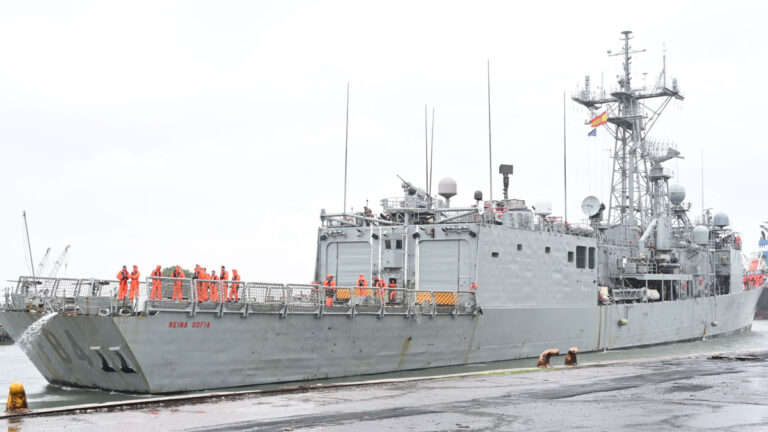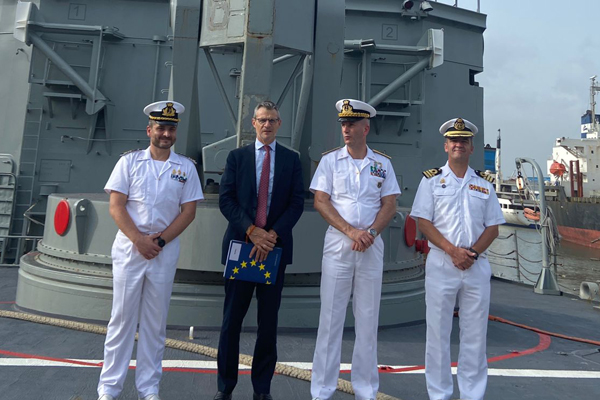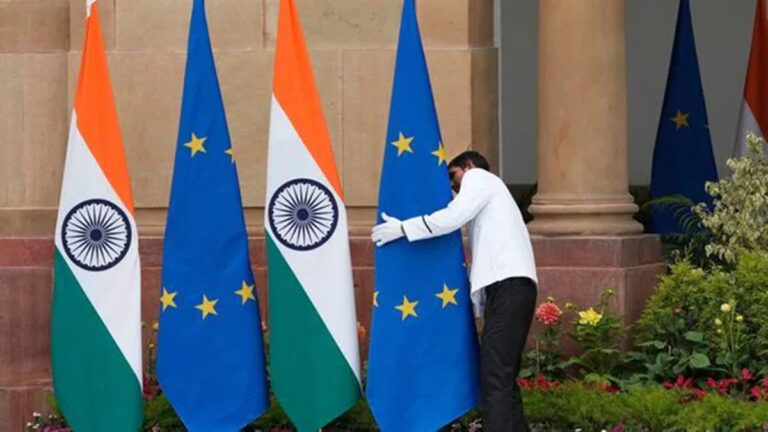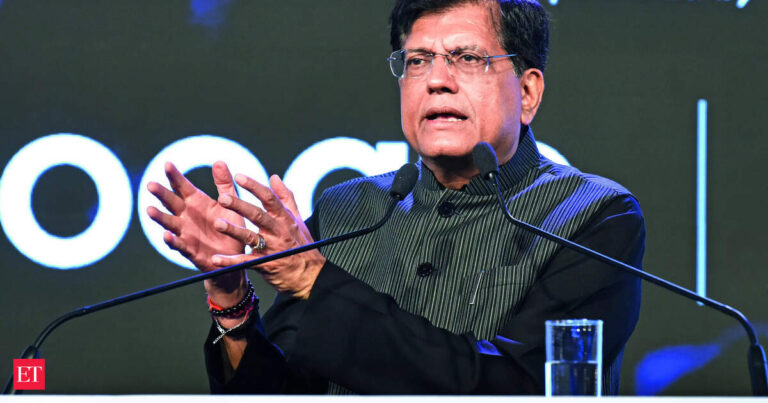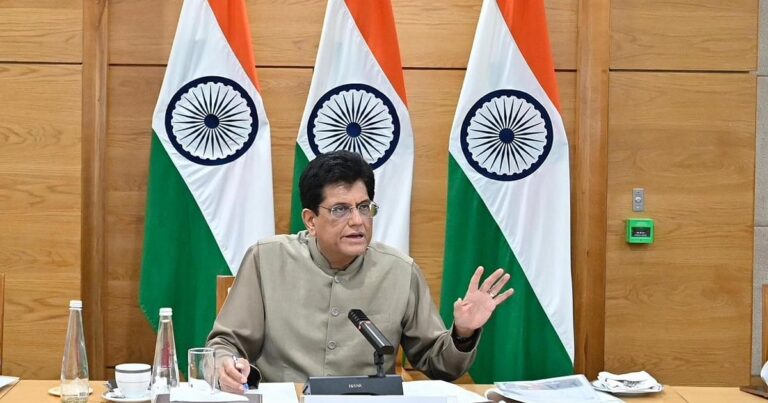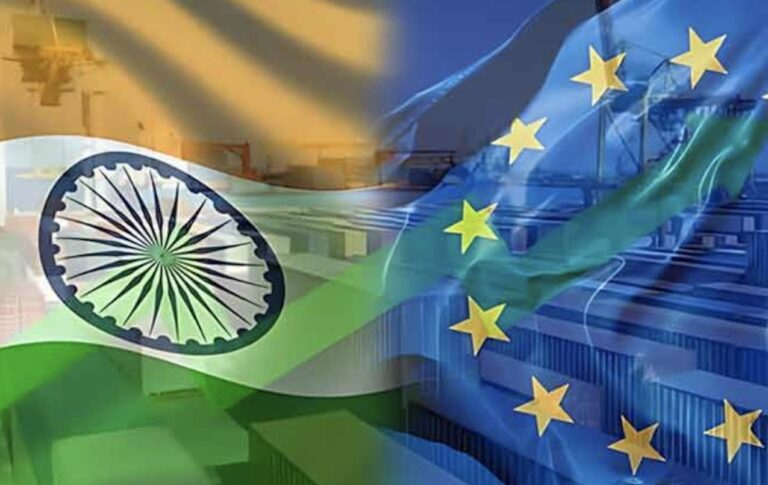
While the president of the European Commission Ursula von der Leyen arrives in New Delhi with an unprecedented entourage of 21 EU commissioners, the visit signals much more than diplomatic courtesy.
In the midst of the Russia-Ukraine war, the administration of Donald Trump launched the future of NATO in uncertainty, the demanding members increased defense spending with 5% GDP-a threshold that even the American military-industrial complex has not reached.
More alarming for Brussels, the White House explicitly repositioned its priorities: “border security” and “counter-the China” now replace “European security” in the strategic calculation of Washington.
Among 32 NATO nations, 23 also belong to the European Union (EU). According to the president of the European Council Antonio Costa, these members of the EU-NATO Probably agree To increase the objective of defense expenditure beyond the current 2% of GDP at a crucial NATO summit in June, where a new reference will be defined.

Costa, a former Portuguese Prime Minister – speaking in January, noted that joint defense expenses from these 23 EU countries have already reached 2% of GDP after a sharp increase of 30% since the invasion of Ukraine by Russia in 2022.
He stressed that with Russia as the main threat of NATO, strengthening air defense, anti-missile systems and electronic warfare capacities should be an absolute priority.
However, the subtext is clear: Europe can no longer rely solely on American protection. If Washington is no longer the security guarantor of Europe, Brussels must trace his own course.
Can the fundamental question emerge: Can Brussels develop an independent security framework without Washington umbrella? The answer can reside in partnerships beyond the Atlantic.
Here is where India enters the equation. With its growing industrial defense base, expertise in native weapons systems and strategic autonomy, India could play an essential role by helping Europe build its own security architecture.
President of the European Commission in India
In the midst of the United States foreign policy, the president of the European Commission Ursula von der Leyen and 21 EU commissioners began a two-day visit to India. This is the first trip of Europe by the college, which took office in December, and the very first visit to India by the commissioners together.
The visit signals Europe’s intention to strengthen partnerships beyond the United States while resetting EU-India links.
Von der Leyen, accompanied by the college of commissioners, also encounter With Prime Minister Narendra Modi. The EU-Inde Trade and Technology council should also meet. Announced in Davos on January 21, the visit marks a key phase of bilateral relations before the next EU-Indian summit.

“At this time of intense geostrategic competition, Europe means openness, partnership and awareness. We seek to deepen links with one of our most reliable friends and allies in India ”, von der Leyen declared.
Why India?
The strategic location of India in Indo-Pacific, through which 80% of global trade in volume, makes it vital for regional security and EU interests.
In the midst of uncertain transatlantic links, the EU seeks to extend key partnerships. Negotiations are underway for a free trade agreement, protection of investments and geographic indications, in parallel with the cooperation in terms of security, research and space.
However, as the European Parliament noted in January 2024 noted, “the partnership has not yet reached its full potential”.
Recently, President Trump imposed A 25% tariff on European imports of steel and aluminum, 25% of which is intended for the United States. India is also preparing for economic uncertainties under Trump 2.0.
Meanwhile, EU-China’s ties remain tense, the two parties hitting the prices for allegations of unfair competition. Von der leyen guidelines Explicitly cite the “aggressive posture and disloyal economic competition from China” of China.
India and the EU seek to move from China, especially in critical minerals, semiconductors and green technologies. As part of the Security Partnership (MSP) minerals, they explore joint efforts in the extraction, treatment and innovation of minerals.
A semiconductor memorandum of understanding – sign—Aid to strengthen the supply chains, to complete the incentives to the semiconductors of India and the EU chip law.
China still dominating global manufacturing (30% of production in 2021 against 3% of India), India is positioned as an alternative to China as part of the Western “The China Plus One” strategy. However, to fully capitalize on this change, India must attract a greater direct foreign investment (IDE) and increase its manufacturing base.
EU-India Trade: expansion links in the middle of the world’s quarters
The economic dimensions of this booming partnership cannot be overestimated. The EU is the largest trading partner in India, with the bilateral trade in goods reaching 124 billion euros (130 billion US dollars) in 2023 – almost 90% in the last decade.
However, India was the ninth EU trading partner, representing 2.2%of the total EU goods, behind the United States (16.7%) and China (14.6%). The export of exports to the EU could help India achieve its export objective of 2 Billions of US dollars by 2030.
According to an EU press release, around 6,000 European companies are present in India, directly employing 1.7 million people and indirectly supporting 5 million jobs.
Commercial and technological cooperation has increased, with the negotiations of the EU-India Free Trade Agreement (ALE) (ALE) incorporating in 2022 and the launch of the Trade and Technology Council (TTC).
The EU and India are pursuing a stronger cooperation on critical raw materials (for example, lithium, rare-terracted minerals, nickel) essential for green transition, by initiatives such as the Security Partnership (MSP).
From trading partners to security allies
While the United States is retreating its “European security” commitments, Europe is investing more in NATO and re-evaluates its Indo-Pacific priorities. Balancing financial and strategic resources will be essential for a deeper EU-Indian security commitment.
India and the EU share a vision of an open Indo -Pacific and based on rules in the midst of increasing geopolitical tensions, as the report of observing it Research Foundation (ORF) -points out A new EU-India strategic agenda in 2025.
Joint maritime exercises between the Indian Navy and the EU naval force (Eunavfor) took place in the Gulf of Aden and the Gulf of Guinea, alongside collaboration on EU security initiatives like Crimario and Esiwa. India also completes the mission of the EU during the Red Sea, deploying 12 warships to protect the shipping routes of Houthi attacks. The EU coordinated maritime presence tool in the Indian Northwest Ocean, provides supported naval deployments.
Security cooperation developed in 2023 with the appointment of the first EU military attaché to India. Defense links – notably arms sales and co -production with France, Spain and Germany – are deepened while India diversifies its suppliers beyond Russia.
Although the EU’s defense mandate remains limited, technological transfers could be a key area of collaboration. EU-Indian security potential, similar to the EU-Japon agreement in November 2024, could cover partnerships in the defense industry, maritime security and spatial cooperation, according to the Orf report.
In December 2024, India and the EU established a strategic dialogue of high -level foreign policy between the Minister of External Affairs S. Jaishankar and the high representative of the EU Kaja Kallas. With the new EU defense commissioner, Andrius Kubilius, advocating a foreign policy based on values, this can be the right time to launch a 2 + 2 dialogue between foreign ministers and defense.
A multipolar reality
While the EU and India recalibrate their strategies, they face a world shaped by parallel wars, the potential consequences of a second presidency of Donald Trump and an assertive China.
Europe, faced with its most important armed conflict since the Second World War, saw its economic and secure foundations – built on cheap Russian energy, American protection and Chinese manufacturing – unfounded.
This prompted the EU to assert itself as a strategic global actor. Despite an occasional friction on the position of “active neutrality” of India concerning the Ukraine Russian conflict, the diplomatic commitment between Brussels and New Delhi was only intensifying.
The arrival of the delegation marks a pivotal moment while the two powers are preparing a new strategic program expected in the second quarter of 2025. With the end of the existing roadmap, a planned summit of the EU-India later this year could serve as a launch paving for a renewed Blueprint for cooperation.
- Shubhangi Palve is a defense and aerospace journalist. Before joining the Eurasian Times, she worked for and bonus. It has more than 15 years of experience in the media industry, covering printed, electronic and online areas.
- Contact the author in Shubhapalve (at) Gmail.com
